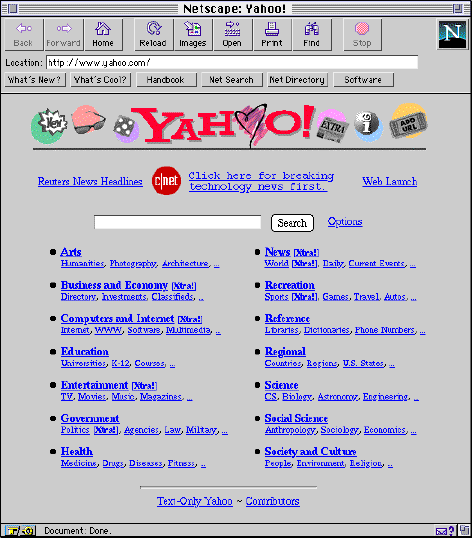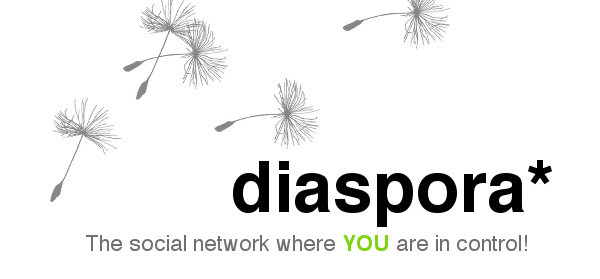P2P Means Power To the People – How The Internet is Regaining Its Democracy
A bit of history
Most of us know the basic history of the Internet and the Web – the 70’s DARPA Net, the invention of resilient decentralized networking with TCP protocol stack, the creation of HTML by Tim Berners Lee. The rest, as they say, is history. Perhaps, what we have forgotten though, was how unencumbered, people-centric, and democratic the original WWW was meant to be. And just to be clear, when I talk about “people-centric”, I am talking about control. Originally, the idea was to allow scientists, teachers and students to share data across university boundaries. The fist servers were hosted by students and university faculty. Everyone was both a “client” and a “server” – both providing and taking advantage of online content. It was not quite P2P (peer-to-peer) in a technical sense, but it was that in a larger semantic sense.
As the web evolved and became larger, perhaps it was inevitable that a certain centralization began to take place – Yahoo, AltaVista, and AOL became the prototypes of today’s Google, Facebook, Twitter and the like – not necessarily in terms of functionality or content, but as large centers of gravity that pulled in users into their orbit, - into their sphere of influence. As this progression took place, less people, it turned out, were interested in hosting content or “apps” than in getting them. At least it seemed so at the time. Thus, a crucial wall of separation was being erected – the dividing line between the all-powerful hosts (the “servers”) like Yahoo and the relatively powerless users (the “clients”) who had to stand at the providing server’s castle gate and ask the bridge to be lowered across the moat to grant them access to their email, profile, and any “personalized” content then available – all of it hosted, of course, on Yahoo’s servers – possibly the first massive “web server farm” out there.
As things progressed and the overwhelming majority of users got locked in to services so “generously” provided by Google, Facebook, Instagram, Twitter and the like – the convenience of immediate access anywhere (the digital Nirvana) seemed to override every other possible consideration (privacy? what privacy?) . However, as we fast forward to today certain encouraging trends are already coming up on the horizon - small clouds “the size of a man’s hand” - yet visible enough to worry the Internet tycoons and content behemoths. What follows is a brief perusal of these trends that could allow everyday netizens (citizens of the Web) to regain autonomy while retaining the utility of the Internet we have come to expect as a given.
Napster – the Swallow That A Summer Did Not Make (or did it???)
P2P File Sharing
All of today’s torrent applications date back to Napster – the company that pioneered P2P file sharing – a simple, yet revolutionary idea that the Internet backbone can be used by users to connect directly to each other’s computers, completely bypassing all of those pesky intermediaries – web servers, DNS servers, any kind of servers. P2P. One peer connecting to another peer on the network. Equality. Despite Napster’s failure as a company (due, of course, to the lawsuit brought on by the RIAA), its invention of the P2P protocol has garnered it a firm place in the Internet Hall of Fame, if there is such a thing. Kazaa, mTorrent, BitTorrent – all of these can trace their existence to Napster and its music-sharing applications. Napster was clearly ahead of its time though, and while the [illegal] file sharing of movies, documents, games and the like never quite went away, it never really became mainstream either. The summer did not come right then, but the cracks in the ice could no longer be hidden either.
The Early Warning Signs: Web 2.0 and P2P Content
The trend away from the ostensible “client”/”server” distinction (passive usage of the content vs. active contribution of content) evolved simultaneously with the rise of the “social web” and the emergence of Web 2.0 technologies (remember Ajax?). Wikipedia is certainly the poster child of this evolution – an immense P2P knowledge repository curated and contributed to entirely by its million-strong user base. Encouraged by its success, similar sites have sprung up like mushrooms – blogs and review sites, source code repositories and wikis, and, of course – Twitter, Instagram, Flickr, - and every other imaginable “platform” site under the sun where content is contributed by the users, not by the host. The host merely provides the platform and the hosting infrastructure, while the users provide the real value – the content which the host is then free to appropriate and monetize in any way he sees fit. This, in the nutshell, is the implicit social contract of the Web 2.0.
Early experiments at Decentralization: P2P Social Networking
As the privacy and spying concerns began to grow with the revelations of new hacks (the infamous Yahoo hack that compromised millions of passwords and email addresses, I am looking at you), Snowden’s testimony about the companies’ willing collusion with the government’s warrantless data monitoring, the backlash against the unfortunate centralization of the WWW became inevitable. Concerns over personal data’s shelf life, the dangerous aspects of having a public persona – a veritable time bomb in the hands of impersonators, social engineers and hackers, - all of these motivated the initial modest attempts to provide alternatives.
Diaspora – a crowdfunded P2P social networking site was perhaps the fist notable attempt to provide one such alternative. The main idea of Diaspora is to give users certain guarantees about privacy and ownership of their data – their profiles, posts, connections. The implementation of this ideal is based on the concept of pods – servers which host data. Any user can use his own computer to host his own pod and keep his content on it, however, most prefer to “spread” the content among many, community-contributed pods. While the content is spread around, it is encrypted and is thus kept private from snooping or 3rd party interference. Users are in full control of deciding who they want to share data with, and their content is made available to their respective connections only via implicit permission settings.
Diaspora is a work in progress, and is not without its faults. Its modest size is its biggest bottleneck – it’s not easy to motivate millions of people to switch from Facebook, essentially abandoning content (and, more importantly, social capital) that has been cleverly locked in to the platform itself. However, new users will likely have alternatives, and they may not necessarily want to be on the same site as their mom and grandpa are on. In 2011 Diaspora had 180,000 registered users, today this number is closer to 700,000. P2P distributed social networking is a definite step in the direction of recovering privacy and control of content and as evidenced by Diaspora’s slow but steady adoption, being social does not have to mean having to give up on these hallmarks of individualism and freedom.
The Finance Revolution: P2P Currency
Unless you have been living under a rock for the past five years or so, you have likely heard about Bitcoin and Satoshi Nakomoto’s seminal paper that introduced the general concept of the blockchain, proof of work mining, and trustless, immutable transactions. These new developments have materialized seemingly ex nihilo right before our eyes – with the rise of Bitcoin, now a 50 billion (yes, that’s billion, with a “b”) market, as well as other “alt coins” – alternatives and spin offs to bitcoin that number in billions of dollars in projected exchange value. The motivation and reasons for this meteoric rise in prominence are not difficult to surmise – the monetary failure of central banks being the primary motivation. The grip of the central banking system has been declining for years now, but its Rubicon moment seems to be the debacle with attempts to stimulate economy by the artificial interest rate suppression (negative interest rates) – a policy that attempted to punish “bad consumers” (aka savers). This overt manipulation, together with unsustainable debt levels and the inevitable currency debasement, combined with the practical issues of the traditional currencies - the clumsiness of sending money across national borders, the monopolies of money transmission agencies like Western Union, and the complete lack of transparency by the likes of HSBC – all of these contributed to the idea that the system is broken and we, as individuals, need to take back the control of our financial assets. P2P electronic currencies endeavor to bridge the gap and enable completely transparent, fixed-inflation level, immutable, near-real time peer to peer transactions that are free from government intervention, censorship and spying. Certainly, it still remains to be seen how well these objectives will be met, as well as what inherent disadvantages will be inherent in the new paradigm. However, the trend itself is undeniable. According to Juniper Research, just this year, the total value of Bitcoin transactions is set to exceed $92 billion. This is, by all standards, a very conservative estimate, given the several recent ICOs (a crypto version of an IPO that’s open and decentralized) that garnered hundreds of millions of dollars in equivalent crypto currencies in a matter of minutes! In short, P2P digital currency is here to stay and its debut on the international scale is signaling a truly momentous paradigm shift – away from government-backed, centralized, institutionalized system of money to a more neutral, protocol-secured method of exchanging digital “money”.
P2P File (Content) Hosting
As was hinted earlier, the rise and fall of Napster, while not really taking file sharing mainstream, was an extremely important milestone in a general evolution away from authority-mediated and authority-curated content sharing. The culmination of these technologies is now seen in the rise of IPFS – the aptly names Interplanetary File System protocol for faster (no DNS needed), direct and private file sharing on a massive scale. The combination of P2P currency with P2P file sharing will allow people to regain their status as “servers” and not just powerless “clients” – the vassals of bloated content hogs, like Google. Essentially, we are talking about an infrastructure that will allow a huge distributed file system the size of the Internet to be accessible to anyone. Due to the nature of sharding (where content is split among several nodes), this system will have 99.99% uptime for all practical purposes, once a critical mass point is reached.
Ethereum – P2P Unstoppable Computing Platform
Ethereum, a brainchild of Vitalik Buterin, has been touted as a competitor of Bitcoin. It is not. The two serve very different, possibly complementary purposes. While bitcoin protocol emphasizes prevention of double spends and distributed transaction verification (decentralized banking), Ethereum solves a very different problem – it provides a platform for an unstoppable (in principle) program execution. What program, you might ask? Any program whose execution you are willing to pay for (the idea being that you pay for memory and CPU resources required for its execution). In Ethereum world, these programs are often referred to as “contracts” because they are primarily meant to be financial in nature. Thus, a contract could specify disbursement of funds based on a change in “state” (aka state machine transition), or a time lapse, etc.
Unlike bitcoin, the programs in Ethereum are Turing-complete, meaning that they can do anything any other program written in C or Java can do (including an infinite loop, which is cleverly prevented by the requirement to “fund” program execution together with its invocation – thus, an “infinite loop” program will run out of “gas” or money needed to continue its execution). Ethereum contracts are already used to run ICOs – Initial Coin Offering crowd funding campaigns for startups. Unlike the traditional IPOs these are completely transparent and automated. The money is not accepted or disbursed by a person – it is done by a contract that is executed and verified by all the participating computers on the Ethereum network.
The applications of this technology are truly mind boggling – innovations in this space are popping up faster than one can keep track – distributed financial modeling platforms that automatically reward more accurate models, prediction betting pools – which allow users both to contribute and to monetize on bottom-up knowledge, open derivatives settling contracts, open charities where one can ensure that contributed funds actually go to intended causes/recipients, digital marketplaces both for digital and physical goods, free from intermediaries (bye-bye, Amazon, Ebay and Etsy).
In summary, the synergy of emerging P2P technologies provides us, the end users, an opportunity to recover the Internet’s original model of voluntary co-operation of equals , participants in the technology, creators rather than mere consumers of digital assets. The early apps and platforms are already here - Steem (a content sharing platform where users get dividends on highly “esteemed” content and p2p content curation), Basic Attention Unit ( a platform to opt in to advertising as opposed to having to put up with it), - and many more on the horizon. Ultimately, whether or not this vision will become a reality depends on the requisite change in public perception and subsequent adoption. Having a file or a hammer does not make one a carpenter, but neither is it feasible to become one without the appropriate tools. Now that the tools are here, the burden of choice is on you.
P2P – An Old Acronym with a New Meaning
Hopefully this whirlwind tour has given you some perspective on the current trends in technology – trends that follow social and political developments - not merely in the digital, but in the real, brick and mortar world we live in. The momentum appears to be clearly in the direction of empowering individual liberty, voluntary co-operation, privacy, creativity and responsibility, - and away from delegating these, or better yet, relegating them to the central “custodes” – the Guardians of Plato’s Republic, as it were. People are waking up, and getting out of the cave. Power to the people!








Thanks for sharing such meaningful piece. It is true that P2P technology is restructuring our society. We rely less in institutions and the government, and empower ourselves more. However, it is important that internet uses like us don't exploit this wonderful concept and technology, and learn to use it the right way
You are welcome! Yes, technology is just a tool and with great tools come great responsibility as per SpiderMan. The way this works best is when positive behavior is reinforced by community rewards, bad behavior - by net zero gain. This is why Steem is so promising.
thanks for sharing this, Derza, following you!
You are welcome, I will keep them coming, stay tuned!